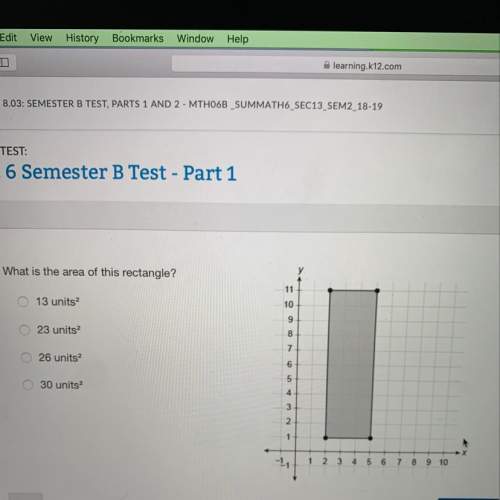
Mathematics, 15.05.2020 20:57 erincnw9939
A screening test for a certain disease is used in a large population of people of whom 1 in 1000 actually have the disease. Suppose that the false positive rate is 1% and the false negative rate is 0.5%. Thus a person who has the disease tests positive for it 99.5% of the time, and a person who does not have the disease tests negative for it 99% of the time. What is the probability that a randomly chosen person who tests negative for the disease actually has the disease

Answers: 2
Another question on Mathematics


Mathematics, 21.06.2019 16:00
What is the quadric regression equation that fits these data
Answers: 1

Mathematics, 21.06.2019 18:00
Solve this and show you’re work step by step ! -5 3/4+3h< 9 1/4 -
Answers: 1

Mathematics, 21.06.2019 22:00
Serena is making an experiment. for that, she needs 20 grams of a 52% solution of salt. she has two large bottles of salt water: one with 40% and the other with 70% of salt in them. how much of each must she use to make the solution she needs? i am in need of
Answers: 1
You know the right answer?
A screening test for a certain disease is used in a large population of people of whom 1 in 1000 act...
Questions

Biology, 21.01.2021 20:00

Mathematics, 21.01.2021 20:00


Mathematics, 21.01.2021 20:00


Mathematics, 21.01.2021 20:00



Mathematics, 21.01.2021 20:00

Biology, 21.01.2021 20:00

Medicine, 21.01.2021 20:00

Mathematics, 21.01.2021 20:00

Mathematics, 21.01.2021 20:00

Advanced Placement (AP), 21.01.2021 20:00


Mathematics, 21.01.2021 20:00

Mathematics, 21.01.2021 20:00

Arts, 21.01.2021 20:00







